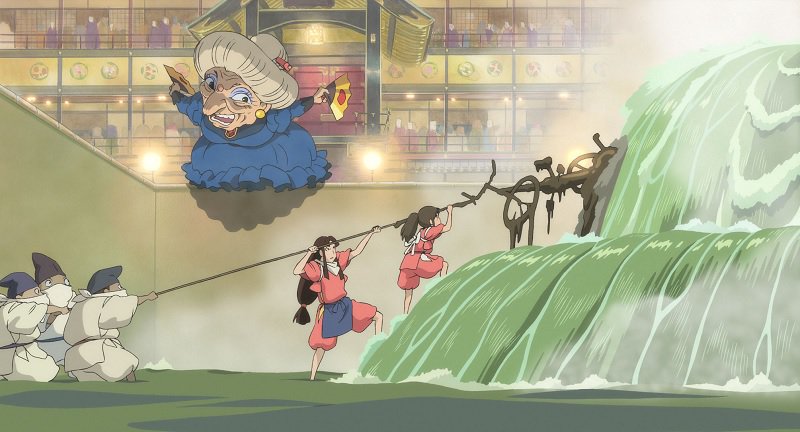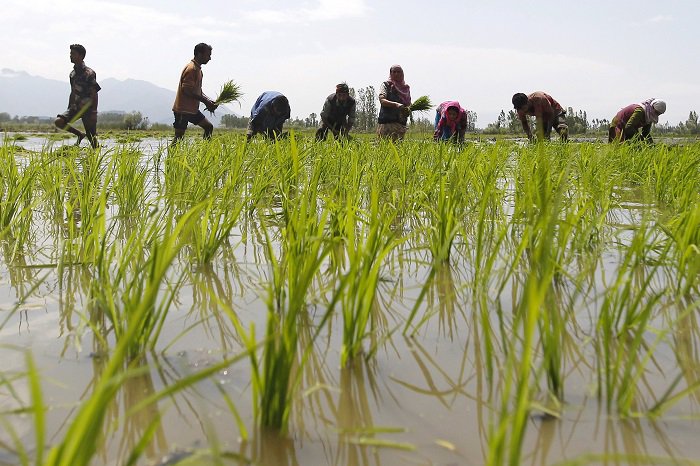The Japanese filmmaker Hayao Miyazaki is one of my favorite directors. The setting of one of his masterpieces, Spirited Away, is a “bathhouse for the spirits.” This is a place where the spirits come to get rejuvenated. One time a really foul-smelling spirit comes and a young girl, Chihiro, the main protagonist, is assigned to clean it.
The wicked Sorceress who runs the bathhouse has taken Chihiro’s name from her, and she is now known as Sen. The spirit is bloated, filthy and unrecognisable. As the foul spirit is being cleaned, Sen falls into the bath and, underwater, finds a thorn in its side. She pulls and pulls, but it is too much for her and soon the entire set of workers in the bathhouse are engaged in trying to pull out the thorn.
As they huff and puff, they finally pull it out.

It was no thorn, but the handle of a bicycle. Along with the trashed bicycle comes out a huge pile of garbage, car parts, wires, plastic bottles and a host of other garbage of modernity. It turns out that the foul spirit was actually a river spirit and, cleansed of the garbage of modernity, it soars away, fresh and free.
Miyazaki presents a critique of modernity’s excesses, and creates a metaphor for the cleansing of the spirit needed to tackle it.
What does that mean? In traditional Japanese and Indian society, the river was looked at something that was alive. There was a relationship with the river. Puja is a means of honoring of a relationship. The colonial state, however, simply looked at the river as a material resource. In the context of the Bible, the Earth is to be dominated by man, used till it is destroyed in the fire of Judgment Day.
A modernity and state that emerges from that paradigm replicates that same model of dominance.

This is also the approach we’ve taken with all other natural resources. The move to chemical-based agriculture and pesticides like DDT that were banned in the West but allowed to be dumped in India poisoned the land. Single cash-crop agriculture depleted the soil.
The issue of pollution in Delhi grabbed global attention recently when it reached killer proportions, but before we look into it, we need to start with agriculture.
As Vandana Shiva writes, there are reasons to move beyond the excess of the Green Revolution. “Firstly, chemical fertilizers and pesticides don’t come free and are a major reason for indebtedness, which itself leads to loss of farms, land and entitlement to food. Secondly, chemical or industrial agriculture is hugely water-demanding, and we cannot afford it in terms of the water crisis we face. One can grow crops organically without that level of water wastage. The third, increasingly compelling reason now is the role of chemical agriculture—Green Revolution agriculture—in propagating climate change. The need of the hour is an authentic agro-ecological green revolution.”
Ironically, we have had better yield before the so-called Green revolution poisoned our land. As M D Srinivas and J K Bajaj document, based on Dharampal’s work: Early British observers report similarly high levels of productivity from many parts of the country in the 18th and early 19th century. In the regions around Allahabad, one British observer reported in 1803 that the productivity of wheat was about 111 Bushels per acre, which amounts to about 7.5 tonnes per hectare (For perspective, it was 1.8 tonnes per hectare in some regions in Allahabad in 1980s). The later British administrators of the region kept referring to the high agricultural productivity prevalent till the early part of nineteenth century.

While the traditional systems were destroyed, these organic methods had yields comparable to the highest yields in the world today.
“Total production of food grains in this region, covering about 45,000 households, was nearly 225,000 tonnes. Since the average household of the region was estimated to consist of about five persons, the per capita production turns out to be about 1 tonne a year. This is of the same order as the per capita production in some of the agriculturally advanced regions of the world today, and is five times the production per capita in contemporary India.”
Why did we make a detour into agriculture on the way to talking about pollution in Delhi?
In the traditional system, cattle were the mainstay of agriculture. They provided fertiliser for the crops, helped till the fields and grazed on the leftovers after the harvest, helping to put it to use. Today the chara is poisoned so it is unfit for even animal use. This leads to large-scale burning to clear away the old for a new harvest. Chemicals used in farming have made the chara harmful for animal consumption. As the chara has become useless, it needs to be disposed of. Farmers do this through burning. This burning puts an excess of pollution into the air that clouds the air all the way to Delhi.

We cannot fix things in isolation, we need to look at the entire approach and ecosystem.
When we look at the problem of garbage and of pollution, it is worth remembering that these are largely artifacts of the industrial revolution and beyond. Modern garbage needs modern infrastructure. Modern pollution needs modern regulation.
Especially when we import goods and technologies not invented in India, it is important that we import not just an object or an idea, but the entire systems and regulations that come with it. As we use more cars, for instance, we have more engine oil changes. Often this engine oil is thrown away and seeps into the ground, poisoning ground water, just as chemical farming increasingly poisons it. As we poison the water, we need systems to get non-poisoned water for drinking. Forty years ago, there were no water filters at homes.
Environment consciousness needs to be ubiquitous and coordinated across different ministries, not as a hurdle to be overcome but as a proactive system. This is not meant as an opposition of modern technology or techniques. But technology and its regulation must be assimilated and regulated by the people, in the languages of the people, and in harmony with how they live rather than by a top-down colonial state.

Scientific solutions can be found in indigenous techniques, if we can learn to look there without being dazzled by modernity. We say “Lokah Samastah Sukhinau Bhavantu”, let there be harmony in all worlds. When we push mega malls in a city like Gurgaon, for instance, and don’t maintain enough green cover – the lungs of the city – pollution is an inevitable result.
Rural people in the forests in India hugged tress to prevent them from being cut down. In a solution of harmony of the worlds, development and the environment would retain equal importance rather than the former bulldoze the latter.
The biggest lesson from the Indian traditions, one that can help the entire planet, is how we measure success itself.
The pursuit of GDP, is the pursuit of artha, only one among four strivings. It needs to be balanced with dharma. The tradition also brings the knowledge of sanyam or restraint of the senses. The modern economy of consumption pushes us to buy stuff we often do not need or even use for the illusion of happiness we don’t get. When GDP is the only measure, we are simply looking at the rate we can turn the earth into garbage.
We cannot fix these today by having a bathhouse for the Spirits, as Hayao Miyazaki did in his film. But it does point to a metaphor. Solutions lie in the renewal of our own spirit and the way there is found in the natural harmony in the path of yoga and the Indian traditions.
In tapping into these, we tap into the natural wisdom that will help us cleanse the planet.

















